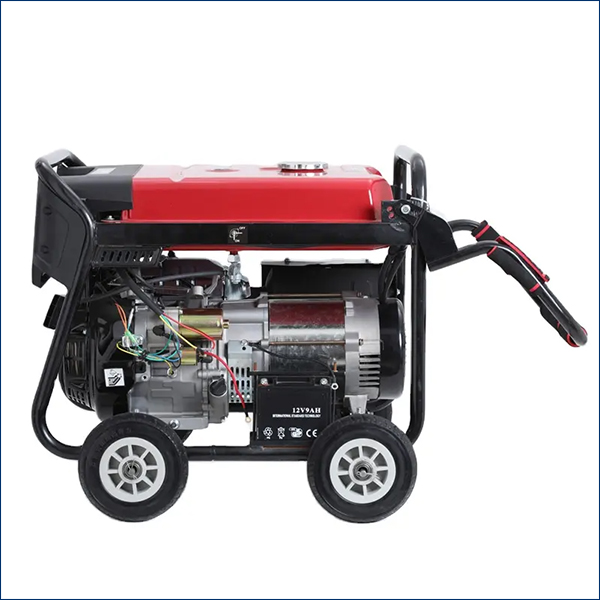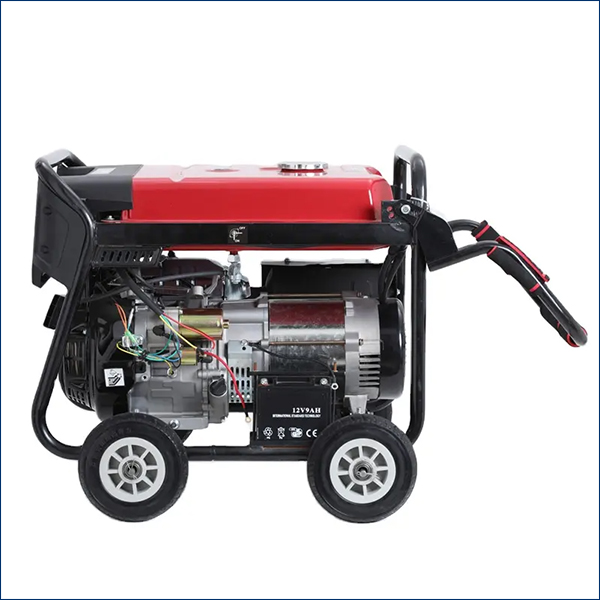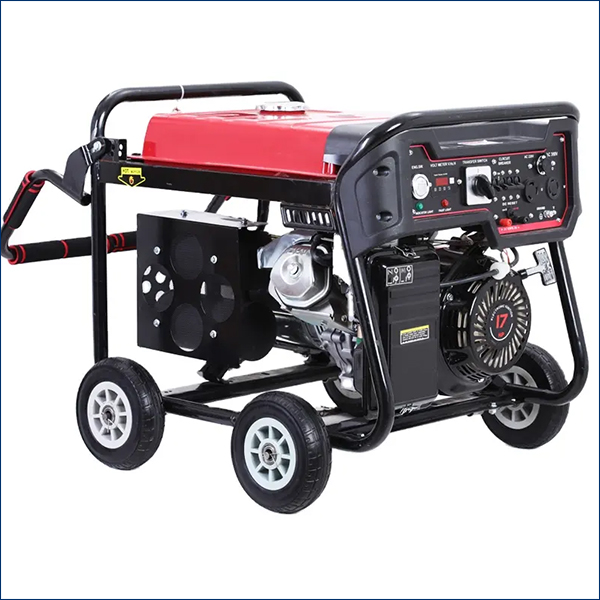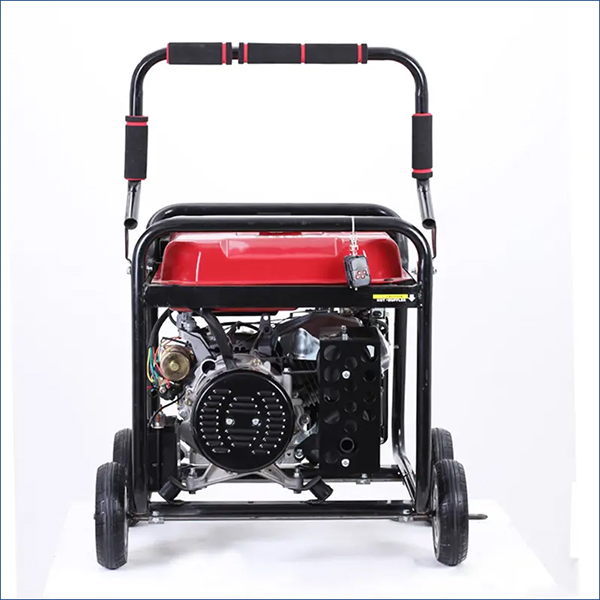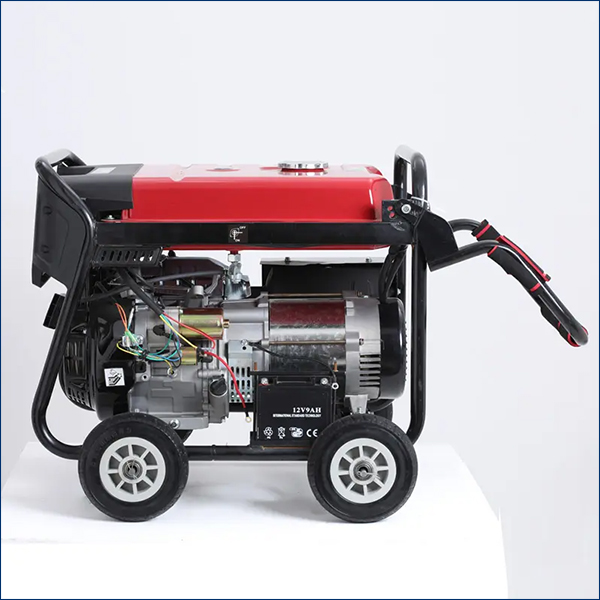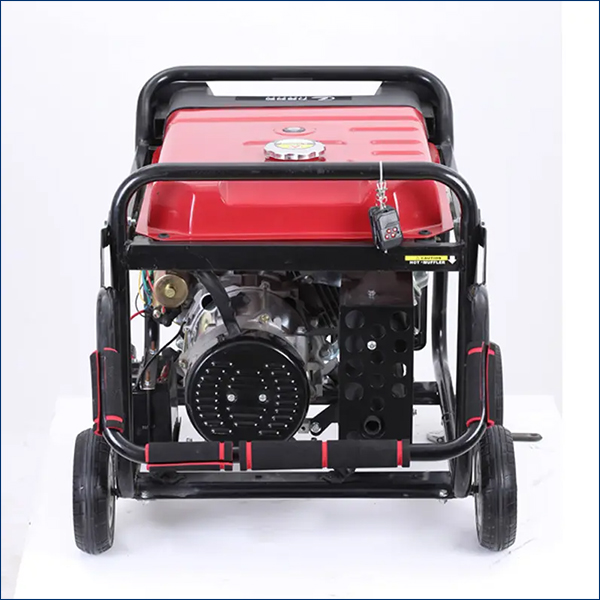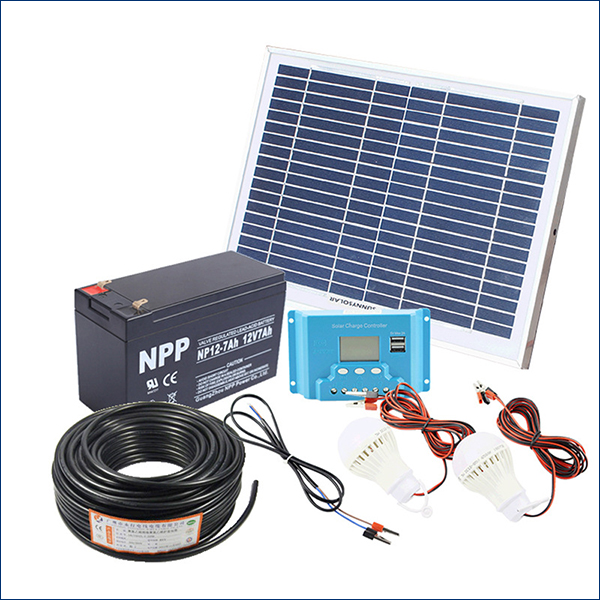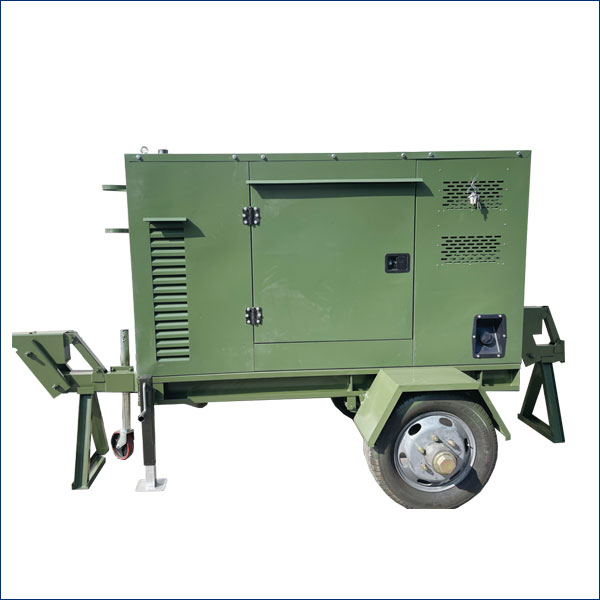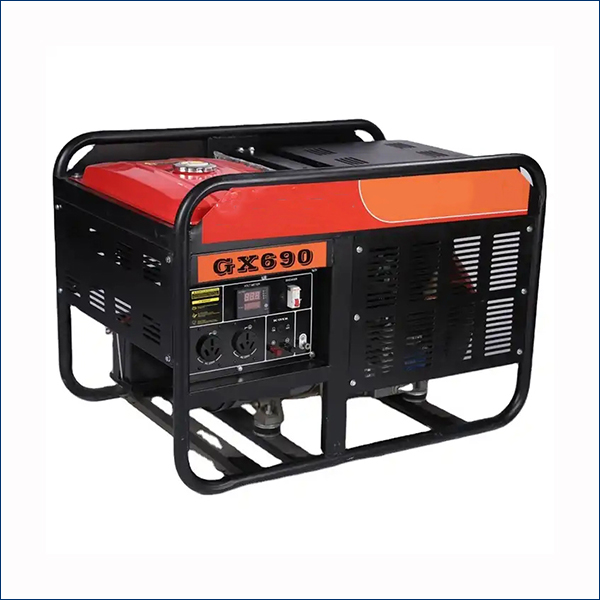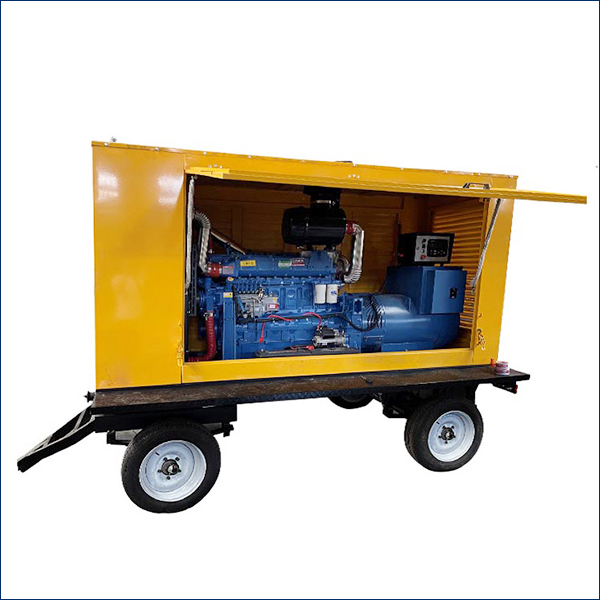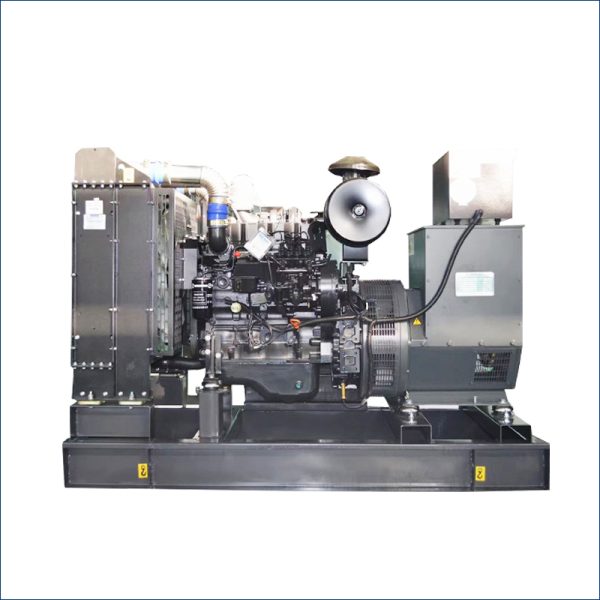Description
The compact portable generator is a lightweight, easy-to-carry power source that generates electricity to power devices and small appliances when away from grid-connected outlets. Unlike traditional generators, which are often bulky and require a lot of space, compact models are engineered for convenience and portability.
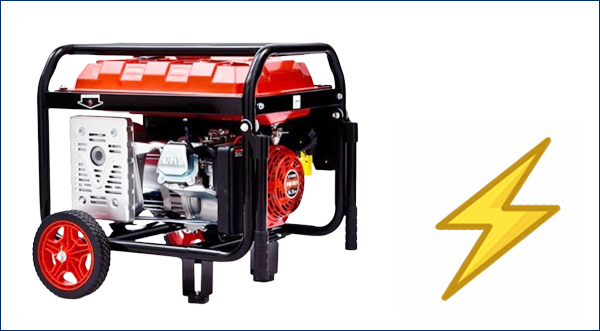
These portable generators are particularly popular in outdoor settings, such as camping, tailgating, and RV living, where access to electrical outlets is limited or unavailable. Their small size makes them ideal for storing in a vehicle or camper without taking up valuable space. Despite their compact design, they are capable of delivering enough power to keep essential electronics running.
Portable generator Fuel type
Most portable generators use gas as fuel to drive the engine. Some use diesel, although this is rare and usually a generator with higher output power. Propane (liquefied petroleum gas) is a popular fuel type due to its clean-burning properties. In addition to being the preferred choice of environmentalists, there are several other advantages to using a propane generator. You can learn more about propane generators in this article: Propane and Gas Generators. In terms of the cost of these generators, gas, and propane generators cost about the same, while generators equipped with diesel engines will cost more. Some generators can run on natural gas or propane, these are called dual-fuel or hybrid generators. You can even get three-fuel generators that can run on natural gas, propane, or natural gas. These generators will cost slightly more than generators designed for one fuel. Although the price difference is small, the advantages of using dual-fuel or triple-fuel generators are self-evident. You have more options, and when fuel is more readily available, this can be of considerable value during natural disasters.
Diesel Portable Generator Features
1. Lightweight and Portable Design
One of the standout features of a portable generator is its lightweight design. Compact models are designed to be easy to carry, with many weighing as little as 30-50 pounds. This makes them ideal for outdoor adventurers who need a reliable power source without the hassle of lugging around heavy equipment. Most models come with handles or wheels for easy transport, making them even more user-friendly.
2. Versatile Power Output
Despite their small size, a portable generator is capable of powering a variety of devices. Depending on the model, you can run anything from small electronics like smartphones and laptops to larger appliances such as electric grills, lights, or portable fans. Many portable generators have multiple outlets, including standard AC outlets, USB ports, and even DC outlets, offering flexibility to power a wide range of devices simultaneously.
3. Fuel Efficiency
Modern portable generators are designed with fuel efficiency in mind. They typically feature low-emission engines that allow for longer run times while using less fuel. This is particularly important in outdoor settings where fuel availability may be limited. Some models even come with eco-mode settings, which optimize fuel consumption based on the power load, allowing the generator to run for extended periods without needing a refill.
4. Quiet Operation
For outdoor enthusiasts, noise can be a major concern when using a portable generator. Fortunately, many compact generators are designed to operate quietly, ensuring that they won’t disturb the peaceful ambiance of nature. These generators use advanced muffler technology to reduce sound levels while still delivering reliable power. Quiet operation is particularly important for camping and RV use, where loud noises can be disruptive to both nature and fellow campers.
5. Durable Construction
A portable generator designed for outdoor use must be durable enough to withstand the rigors of various environments. Most compact generators are built with rugged exteriors that are resistant to dust, rain, and other elements. Additionally, they often feature protective frames to prevent damage from bumps or drops during transport. This ensures that the generator remains operational, even under tough conditions.
Here is the portable generator stocks conditions in our factory for your reference!!
Small Portable Generator Parameter
|
MODEL
|
PR2800
|
PR3800
|
PR4500
|
PR6500
|
PR7500
|
PR8500
|
PR9500
|
PR10500
|
|
Engine Type
|
YH170F
|
YH170F
|
YH170F
|
YH188F
|
YH188F
|
YH190
|
YH192
|
YH192F
|
|
Rated Voltage
|
220V
|
220V
|
220V
|
220V
|
220V
|
220V
|
220V
|
220V
|
|
power
|
2kW
|
3 kW
|
4 kW
|
5kW
|
6kW
|
7.0kW
|
8.0kW
|
1 OkW
|
|
Rated Frequency
|
50Hz
|
50Hz
|
50Hz
|
50Hz
|
50Hz
|
50Hz
|
50Hz
|
50Hz
|
|
Fuel tank capacity
|
15L
|
15L
|
15L
|
25L
|
25L
|
25L
|
25L
|
25L
|
|
Lubrication capacity
|
0.6L
|
0.6L
|
0.6L
|
1.1L
|
1.1L
|
1.1L
|
1.1L
|
1.1L
|
|
Noise
|
<75dB
|
<75dB
|
<75dB
|
<76dB
|
<76dB
|
<76dB
|
<76dB
|
<76dB
|
|
Gross weight
|
35KG
|
37KG
|
41KG
|
69KG
|
69.5KG
|
70KG
|
74KG
|
78KG
|
Portable Generator Benifits
1. Power Anywhere
Whether you’re camping in the wilderness, tailgating before a big game, or living off-grid in an RV, having access to a portable generator can make a significant difference. It allows you to run essential devices, such as lights, phones, and cooking appliances, without relying on grid electricity. This independence from the electrical grid is a huge advantage for outdoor enthusiasts who want to stay connected and comfortable, even when far from civilization.
2. Convenience and Portability
The main advantage of a compact portable generator is its portability. The compact design ensures that it can be easily carried in a car or RV, and many models come with convenient features such as wheels and ergonomic handles for easy transport. This portability means you won’t have to worry about being stranded without power, even in remote locations.
3. Backup Power for Emergencies
Aside from outdoor adventures, a portable generator is also valuable in emergency situations, such as power outages caused by storms or natural disasters. Compact models are easy to store and can be quickly deployed to provide backup power when the grid goes down. With a portable generator, you can keep lights on, charge phones, and run essential appliances until power is restored.
4. Cost-Effective Alternative
Investing in a portable generator is a cost-effective way to ensure you have a reliable power source when you need it most. Unlike other power sources, such as solar generators, compact generators are relatively affordable and provide a high power output for the price. Additionally, they are easy to maintain and fuel, ensuring long-term usability.
5. Eco-Friendly Options
Many portable generators are designed with eco-friendly features to minimize their environmental impact. Some models use clean energy sources like propane or natural gas, while others feature advanced technologies that reduce emissions and fuel consumption. If you’re concerned about your carbon footprint, a portable generator can offer a greener alternative to traditional gas-powered generators.
Portable Generator Applications
Portable household generator
In general, household portable generators can consider a generator of more than 3KW. If you are considering a smaller 3-4 kilowatt generator, the maximum amount of electricity produced can meet the electricity needs of your refrigerator (or room air conditioning), as well as your lights, TV, computer, and some low-current appliances. If you are using a generator below 5KW, it is not feasible to connect a small generator directly to the power lines in your home, usually, you need to use an extension cord, this is because the power lines in your home cannot provide enough power. When your home uses more electricity than the output the generator can provide, the generator can easily trip.
You can connect a portable generator to your home with a switch. This is not as convenient as a backup generator with an automatic change-over switch, but it will still make things a lot easier. You can purchase manual transfer switch kits in various sizes. These will require you to turn the generator on and off yourself. You also have to manually switch from mains to generator and back again. But you can easily use existing electrical outlets and hard-wired lights in your home. If you use an extension cord, you can only use a lamp plugged into an outlet.
For generators with power greater than or equal to 5KW, you should only consider using a transfer switch. Even then, you can only use a few lines. You won’t be able to use a portable generator to power the entire house. Although the largest portable generators can provide all the power you need. The great thing about using a portable generator as a backup power source for your home is that you can also use it for other purposes, such as camping.
You can buy a basic transfer switch (Reliance Control TF151W) for a few hundred dollars. Although more than likely, you’ll want a complete kit that supplies the auxiliary circuit breaker for the generator. For these high-end changeover switches, you can expect to pay between 1600 and 2500 yuan, depending on how much circuit you need. Larger generators will be able to handle more circuits, so larger transfer switch kits are required. You also need to consider installation costs. The kit may come with all the necessary plugs and wiring, but you will still need a qualified electrician to install it for you. Because the transfer switch is directly connected to the house wiring, this requires compliance with specific regulations.
Portable generator for camping
If you’re camping, you may not have much room for a large generator. For basic tent camping, you can consider a really small 1Kw to 2Kw generator. These are usually small and light enough for one person to carry. They also don’t require much gas and can fit in the trunk of most cars. Although you will be limited by what the generator can be used for. These generators can power a stereo, television, or similar electronic devices, as well as provide some lights and a stationary fan or small space heater. If you are using an air-conditioned RV, 10,000BTU of AC requires at least 3,000 watts. You’ll probably want something bigger so you can run more than your air conditioner on a generator.
Food truck portable generator
If you only need to power the point of sale system and the coffee machine (or similar load), you can equip the food cart with a 1-2kw generator. In most cases, though, you’ll probably want to use a few more appliances. Food truck owners seem to prefer 3-4 kW generators. These are small enough, practical, and provide enough electricity, a small (under the counter) refrigerator, some appliances, necessary electronics, and lighting. The size of the generator used by food trucks depends entirely on the size of your truck and what power you need to keep your business running.
Portable field generator
Site requirements vary widely. One thing to consider when using generators for power tools is that they require a high starting wattage (peak load). It will also depend on how many people work at the same time. Several tools starting at the same time will require a high peak load. For some drills or similar tools, about 3KW is fine. Although most site generators tend to be 5KW or higher. If you use a high-power tool, such as an Angle grinder, a higher power output will be essential. Even more important if you’re using a table saw or an air compressor. An air compressor can be started with any power of 3-6kw.
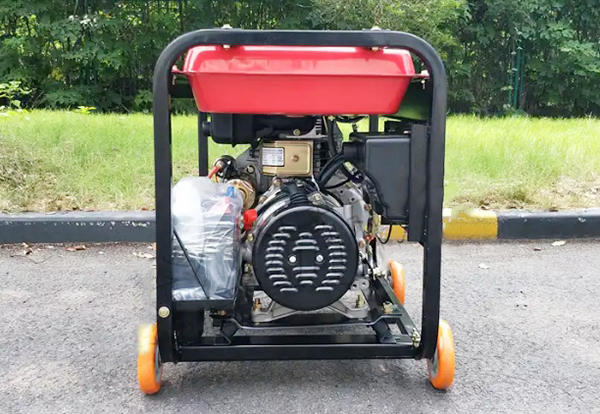
A compact portable generator is an invaluable tool for anyone who enjoys outdoor activities and needs a reliable power source while off the grid. With their lightweight, fuel-efficient designs, these generators provide the convenience of portable power for camping, RVing, tailgating, and emergency situations. Whether you’re looking to power small electronics, lights, or appliances, a portable generator offers the flexibility and reliability you need. By considering factors like power output, fuel type, and noise level, you can find the perfect generator to meet your outdoor adventure needs.






